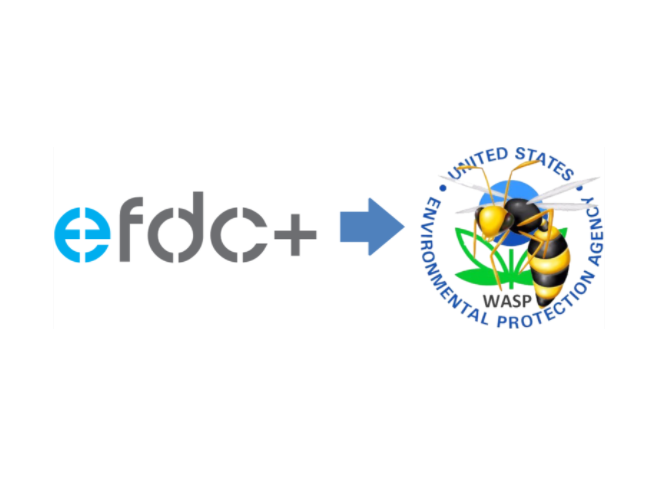EEMS10.4 to WASP8 Linkage

The Water Quality Analysis Simulation Program (WASP) is a dynamic, spatially-resolved, differential mass balance fate and transport modeling framework for contaminants in surface waters and bottom sediments. WASP has been applied to a range of different surface water systems, addressing a variety of contaminants. You can read more about WASP at the EPA website here.
While the WASP interface does provide modelers the ability to set up a simple two or three-dimensional model; in many cases, modelers may want to set up a more complex hydrodynamic model with detailed transport between each of the segments. This task can be very inefficient in WASP. One of the preferred solutions is to link it with a three-dimensional hydrodynamic model such as Environmental Fluid Dynamics Code (EFDC). The linkage consists of the hydrodynamic model writing an output file containing transport information which is then read and used by WASP.
With this set up, WASP can use the hydrodynamic information from models built in EFDC+ and run a water quality simulation. To facilitate this process, the WASP developers created an application program interface (API) to allow the efficient generation of a hydrodynamic linkage file that can be used as input by WASP. The core of the API is a linked library (Hydrolink.dll) which is utilized by both EFDC+ and WASP. The Hydrolink.dll helps create the linkage file from the hydrodynamic model and ensures that hydrodynamic information is passed correctly to WASP. The interactions between a hydrodynamic model such as EFDC+, the API and WASP are shown in Figure 1 below.

In the upcoming release of EEMS10.4, the EFDC+ code has been enhanced to interact with the API and create the hydrodynamic linkage file (*.HYD) for WASP7 and WASP8. The hydrodynamic linkage file contains spatial and temporal information, including segment volumes, depths, velocities, temperature, and salinity. It also includes the individual flows calculated across all cell interfaces. Users should be aware that the hydrodynamic information and the flows are averaged over a period of time equal to the frequency that they are written to the linkage file.
The modeling framework presented in this blog provides a useful tool for developing the water quality model by linking the EFDC+ hydrodynamic model to WASP. An EEMS10.4 beta version will be available for testing at the beginning of November.
Reference:
Wool, T.; Ambrose, R.B., Jr.; Martin, J.L.; Comer, A. WASP 8: The Next Generation in the 50-year Evolution of USEPA’s Water Quality Model. Water 2020, 12, 1398. https://doi.org/10.3390/w12051398
WASP8 user support website: http://www.epawasp.twool.com/







